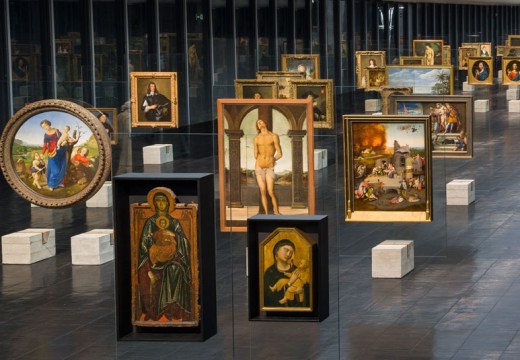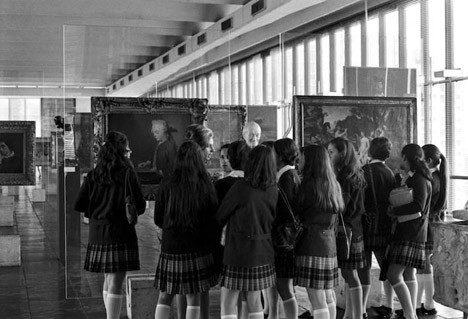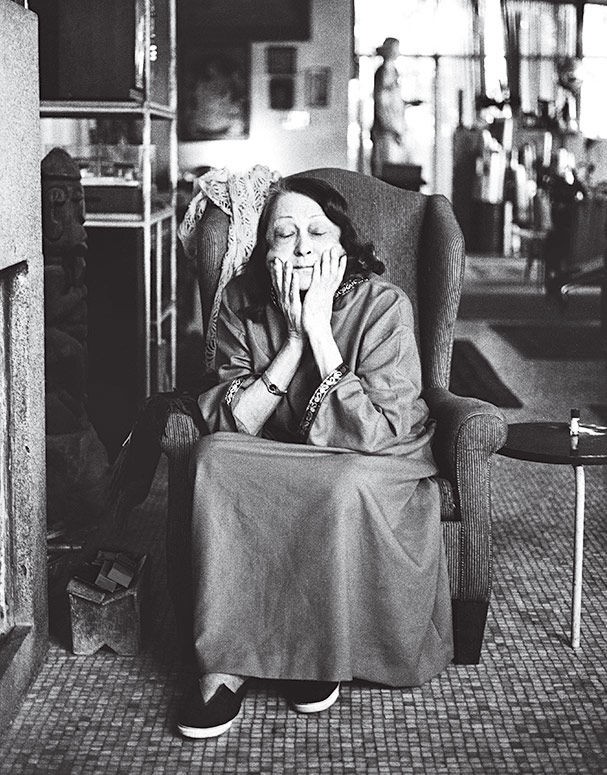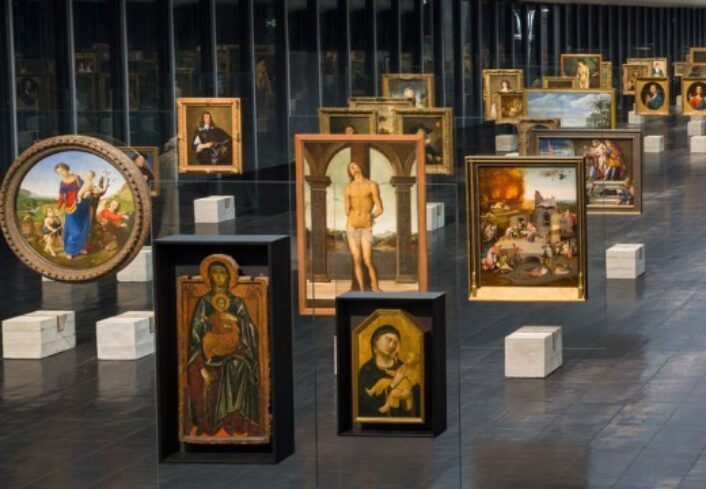Back in 1968, Lina Bo Bardi designed São Paulo’s famous Museu de Arte de São Paulo (MASP) with her unique modern style. Remembered as one of the 20th century’s most famous architects, the open and transparent space that Bo Bardi created was quite refreshing. As an expat to Brazil, Bo Bardi’s design was heavily influenced by her formative years in Italy during WW II. Her ideas were innovative and NEW. As such, the most impressive part of the museum, aside from the collection itself, was the way artwork was displayed. Suspended on “glass easels” which were held upright by blocks of concrete, “open” galleries were created.
In the late 1980’s these galleries were removed, partly because of conservation issues. The museum returned to a traditional display. Now, two decades after those easels were removed, “the hang” is back. This time there aren’t conservation issues… rectangular sheets of glass are anchored in bare concrete bases. Additionally, whereas before Bo Bardi grouped works according to schools, they are now presented in a chronological arrangement. This display pattern emphasizes the 3-dimensionality of the paintings. Frames and the paintings’ backs can be examined as a rare and a wonderful educational opportunity.

Sadly, due to the fact that the easels have 4 standard sizes, only about 100 of MASP’s 8,000 pieces can be displayed in this fun manner!
Image courtesy of: Apollo Magazine, photographed by: Eduardo Ortega

A view of MASP’s picture gallery… information about the artwork is provided on the reverse of the panels so that the space appears as nothing by paintings from one side and nothing by text from the other side!
Image courtesy of: Apollo Magazine, photographed by: Eduardo Ortega

A picture of schoolgirls examining the glass easels and artwork in 1973.
Image courtesy of: Deezen, photographed by: Luis Hossaka

A 1990 portrait of Lina Bo Bardi sitting in her home. Years ago, as a woman in a male-dominated profession, her cause wasn’t helped by the fact that she lived in both Italy and Brazil… both countries that were extremely conservative and masculine. Still, Bo Bardi persevered and became one of the 20th century’s most important architects.
Image courtesy of: Dwell, photographed by: Juan Esteves
